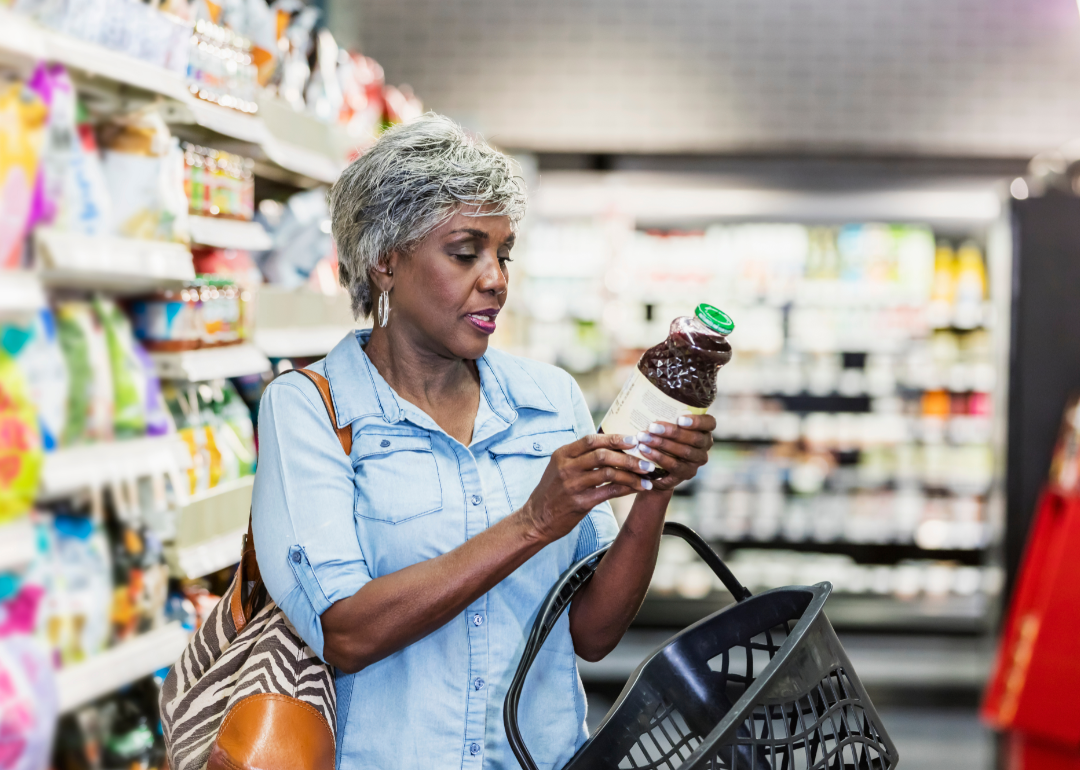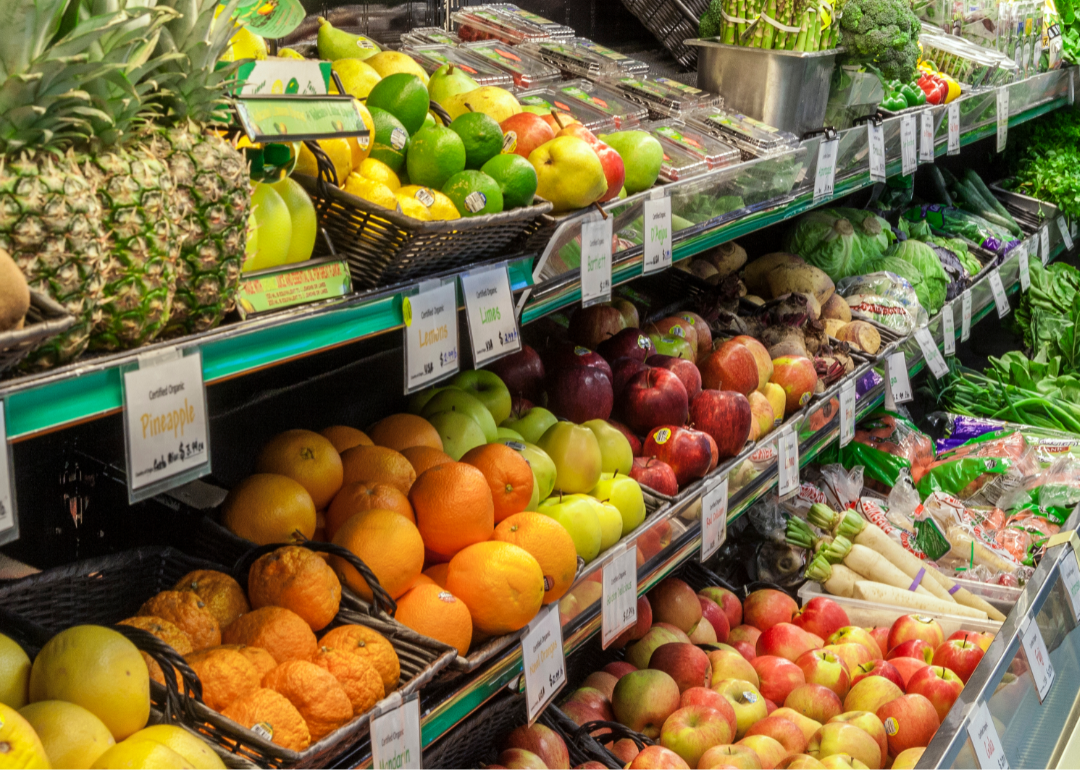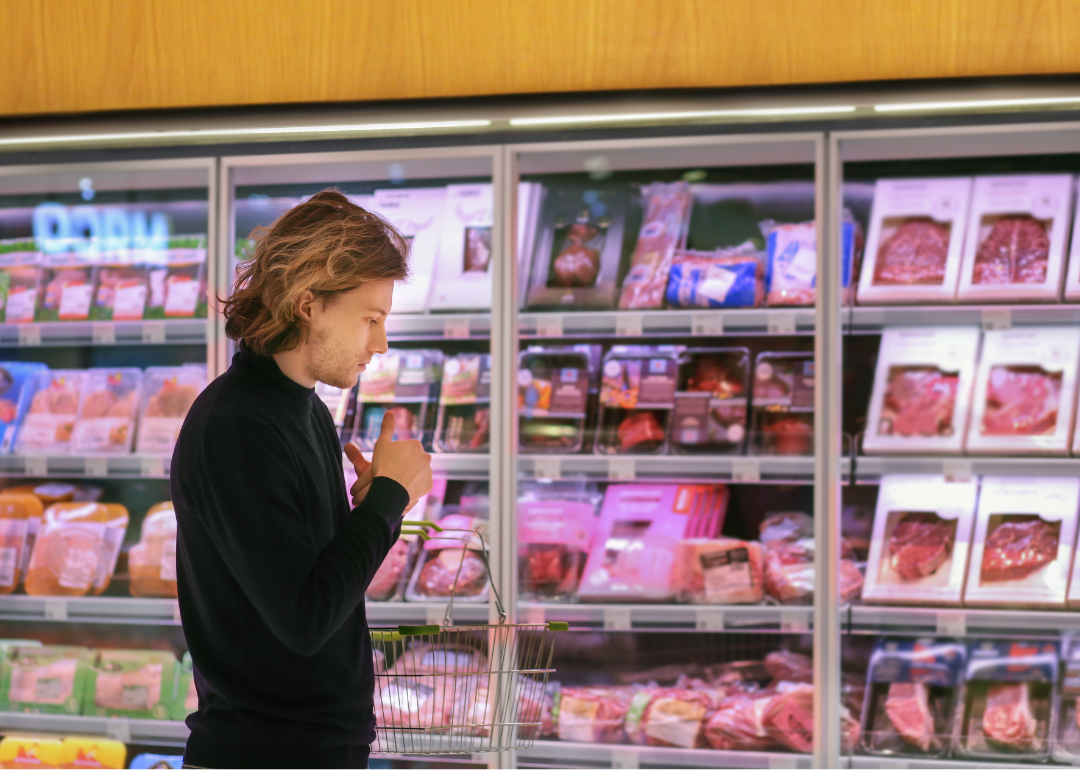Grocery shopping can be a Herculean task these days.
Is my food choice healthy? Is added sugar lurking within? Is it organic? GMO? Fair trade? The only part that’s easier is pushing your cart: Even though you spend more, it’s bound to be lighter.
Recommended Videos
We all strain our eyes to decipher food labels — although we know we can’t necessarily trust them. And it’s not always the fine print: Marketing chicanery is often staring us right in the face via slogans, packaging, images, and even product names that imply a product is healthy, sustainable, or humane.
Check out the Florida Foodie podcast. You can find every episode in the media player below:
To help you decode what’s what, Experience Life dug into the sneaky strategies and mixed messages on so many food packages.

Canva
Healthy or Healthwashing?
Food manufacturers have been claiming unhealthy foods are good for you for a long time. Organic junk foods — including sodas, chips, and prepared meals — may be better for you than conventional snacks, but they're still highly processed. These are just some of the terms food makers use to try to sell you on their products' "health benefits."
"Good For You!": The U.S. Food and Drug Administration (FDA) closely regulates direct health and medical claims, but there are many creative ways to skirt this. For instance, a manufacturer can't claim a product will "boost" the immune system, but it can say it will "support" it — a subtle distinction when you're ill and looking for quick relief.
"Sugar-Free": Nature — and food scientists — created myriad types of sugar. Ingredients are listed on food packages in descending order of quantity, and one trick is to flavor foods with multiple sweeteners so "sugar" doesn't appear high on the list. If a product claims to contain no high-fructose corn syrup, it could still be chock-full of other sugars — and may actually be sweeter. The FDA requires "sugar-free" products to contain less than 0.5 grams of sugars per serving, but they may still contain carbohydrates from other sources.
"Low-calorie" sodas and desserts may include sugar alcohols (such as sorbitol, mannitol, xylitol, or isomalt) that can still send you on a blood-sugar roller coaster, or artificial sweeteners (such as aspartame, saccharin, or sucralose) that can have a rebound effect, inspiring you to eat more.
"Low Sodium": This FDA-regulated term certifies that each serving contains no more than 140 mg of sodium. A "reduced sodium" product must have at least 25 percent less sodium than its regular version — but that doesn't guarantee it's not still packed with salt. And beware: Foods labeled "salt free," "no sodium," or "sodium free" can still include 5 mg of sodium.
"Fat-Free": FDA requirements for nutrient-content claims are tough to decipher. Leaving aside the quality of the fat, a "fat-free" designation doesn't mean that a product actually has zero fat, just that it has a smaller amount: 500 mg per serving. "Low fat" means a product has no more than 3 grams per serving; "reduced fat" means a food has at least 25 percent less fat than its regular counterpart.
Similar regulations govern advertising of lower saturated-fat, cholesterol, and calorie content, as well as terms like "lean." But remember: If a product boasts reduced fat, it usually has other ingredients making up for the loss in flavor, such as salt or sugar.
"Gluten-Free": In 2013, the FDA published rules defining this term to mean the product "does not contain an ingredient that is a gluten-containing grain." But just because a product doesn't contain gluten doesn't mean it's healthy: One of the most popular gluten-free flours — rice flour — is highly glycemic and not particularly nutritious, especially when compared with nut and seed flours. "Gluten-free" food can also be loaded with sugar, salt, or fat to make up for its lack of flavor or texture.
"Superfood": This is a super marketing term often bestowed on a product by growers' councils (based on studies funded by the council) or trendy health gurus. The FDA does not regulate the designation, but as of 2007 the European Union banned making such claims unless there's credible scientific proof — and so far, most "superfoods" aren't passing the test.
"Mom-approved": This phrase may be the ultimate in healthwashing. But sorry to say, there is no official FDA mom to sanctify it.

Canva
Green or Greenwashing?
Food companies work hard to give products a green halo, whether deserved or not. Tropes like "natural," "whole," "farm fresh," and "eco-friendly" are feel-good phrases implying that a product is good for you and the earth. Images of sunrises, countrysides, or woodgrain on packaging bolster this in our minds; we even perceive food as healthier when the calorie count is printed on a green label rather than a red one, according to a Cornell University study. The FDA doesn't regulate most of the green sheen. These are some common terms and notes on which ones are meaningful.
"Natural": Sounds ideal, but this ubiquitous cliché means nothing at all. The FDA doesn't define or regulate its use, so many foods — even those with artificial dyes, chemical preservatives, and genetically modified organisms (GMOs) — may be labeled "natural." As New York University public-health professor Marion Nestle, PhD, MPH, writes in "What to Eat," "'Natural' is on the honor system."
"Farm-Raised": The FDA's definition of "farm" is primarily for tax and compliance purposes and is as wide as the amber waves of grain. So, in marketing, this term is merely a pleasing platitude.
"Fresh": This seemingly clear-cut word means many things. The FDA requires that "fresh" foods be raw; never have been heated or frozen; and contain no preservatives. But they can still receive postharvest pesticides; be washed in mild chlorine or acids; receive ionizing radiation; and be covered in approved waxes or coatings.
"Organic": This term was once open to interpretation, but the strict National Organic Program certification process has been governed by the U.S. Department of Agriculture (USDA) since 2001. For a product to win a USDA Organic label, at least 95 percent of its ingredients must have been grown or processed without most synthetic fertilizers or pesticides, among other standards. The Made With Organic Ingredients label means that a minimum of 70 percent of ingredients — but not all — meet the standard.
Note that many organic foods are imported from countries where pollution is not as regulated and so can contain heavy metals and other toxins. Also, USDA organic certification is time-consuming and expensive; some small farms may produce organic foods but not be able to afford the certification process.
And "organic" doesn't necessarily mean healthy: Organic cookies, chips, and more can still be loaded with sugar, salt, and unhealthy fats. It also doesn't mean a product was humanely produced.
"Biodynamic": Philosopher and social reformer Rudolf Steiner, PhD, outlined tenets of biodynamic agriculture in 1924, establishing the first rules for an organic farming system. Since 1928, Biodynamic Federation Demeter International has certified biodynamic farms and products, including wines. These items meet USDA Organic requirements plus stricter rules for biodiversity, sustainability, water conservation, and disease, pest, and weed control.
"Green Seal": Founded in 1989, the global nonprofit Green Seal was a pioneer in certifying products that meet health, environmental, and sustainable standards. Beware: Some food packaging has faux ecolabels to mimic certified labels.
"Non-GMO": Labeling food that is bioengineered (BE) and derived from GMOs used to be voluntary. In 2018, the USDA established the National Bioengineered Food Disclosure Standard, requiring BE labels or QR codes beginning in 2022.
Under the new rules, the USDA defines BE food as products "that contain detectable genetic material that has been modified through in vitro recombinant deoxyribonucleic acid (rDNA) techniques and for which the modification could not otherwise be obtained through conventional breeding or found in nature." Critics complain the standard has many loopholes. Also, "non-GMO" does not mean a product is organic or healthy.
"Fair Trade": The global fair-trade movement aims to ensure that growers get fair payment for their products; to encourage environmental stewardship; and to help consumers make conscious choices to support these producers. The most trusted label is the Fairtrade Mark.

Canva
Humane or Humanewashing?
Most meat, dairy, eggs, and fish in the United States come from concentrated animal feeding operations (CAFOs) (see "The CAFO Conundrum" for more). As this factory-farming method expands, food manufacturers' research has discovered growing consumer opposition. Enter humanewashing, the practice of using misleading marketing to claim that animals are humanely treated — whether they are or not. These are some of the latest terms and labels.
"Cruelty-Free": Neither the FDA nor USDA oversees the use of this term in advertising, so other groups have stepped in. The agricultural organization A Greener World, which also certifies organic, grassfed, and non-GMO products, awards the Animal Welfare Approved label to independent farms where animals are raised outdoors on pasture or range for their entire lives and are slaughtered humanely. These farms must also practice sustainable growing techniques.
The Humane Farm Animal Care group labels products Certified Humane Raised & Handled to indicate the animals have been humanely raised from birth through slaughter. The Global Animal Partnership, launched by Whole Foods in 2008, certifies animal welfare, including emotional well-being, and requires that animals be stunned before slaughter.
Halal and kosher certifications require "quick and swift slaughter" but do not guarantee animals are humanely raised.
"Free-Range": There's no USDA definition governing the amount of playtime a chicken gets to root freely around a barnyard, so buyer, beware: Terms like "free-range," "pasture-raised," and "farm-raised" may be just marketing speak.
And while free-range chickens are not necessarily organic, an organic chicken must be free range, notes the National Chicken Council.
"Grassfed": There's evidence that animals fed grass and forage — rather than grain — are healthier, which results in more nutritious and better-tasting products as well as more sustainable farming and ranching practices, according to the American Grassfed Association (AGA).
The USDA began certifying grassfed products in 2006 but revoked the label in 2016. Today, the AGA certification, which debuted in 2009, is the most recognized standard and requires that animals were fed a lifetime diet of 100 percent forage, were raised on pasture, and were never treated with hormones or antibiotics.
"Grass-finished" cattle are fed grass or forage in the final weeks before slaughter, as opposed to those finished on corn mixed with growth hormones and prophylactic antibiotics to bulk them up and prevent diseases.
"No Antibiotics": To prevent animals from contracting diseases in overcrowded feedlots, they're given antibiotics. But antibiotic overuse may encourage the growth of drug-resistant superbugs.
The USDA Process Verified label guarantees that no antibiotics were used in producing certified meats and eggs. Sound-alike labels are not USDA approved.
"Wild-Caught": There is currently no government-certified labeling for wild-caught fish. Several organizations issue labels certifying sustainably caught or raised seafood: the Marine Stewardship Council, the Aquaculture Stewardship Council, the Global Seafood Alliance, and the Wild American Shrimp group.
There is also rampant slavery in the fishing industry but no labeling to tell consumers whether what they're buying supports fair labor standards.
"Dolphin Safe": Following a consumer boycott in the late 1980s, the United States created dolphin-safe standards for tuna fishing that are followed by most U.S. fisheries and backed up by can labeling. Tuna-fishing methods can still produce bycatch, and "dolphin safe" does not mean other marine animals aren't harmed.
This story was produced by Experience Life and reviewed and distributed by Stacker Media.



